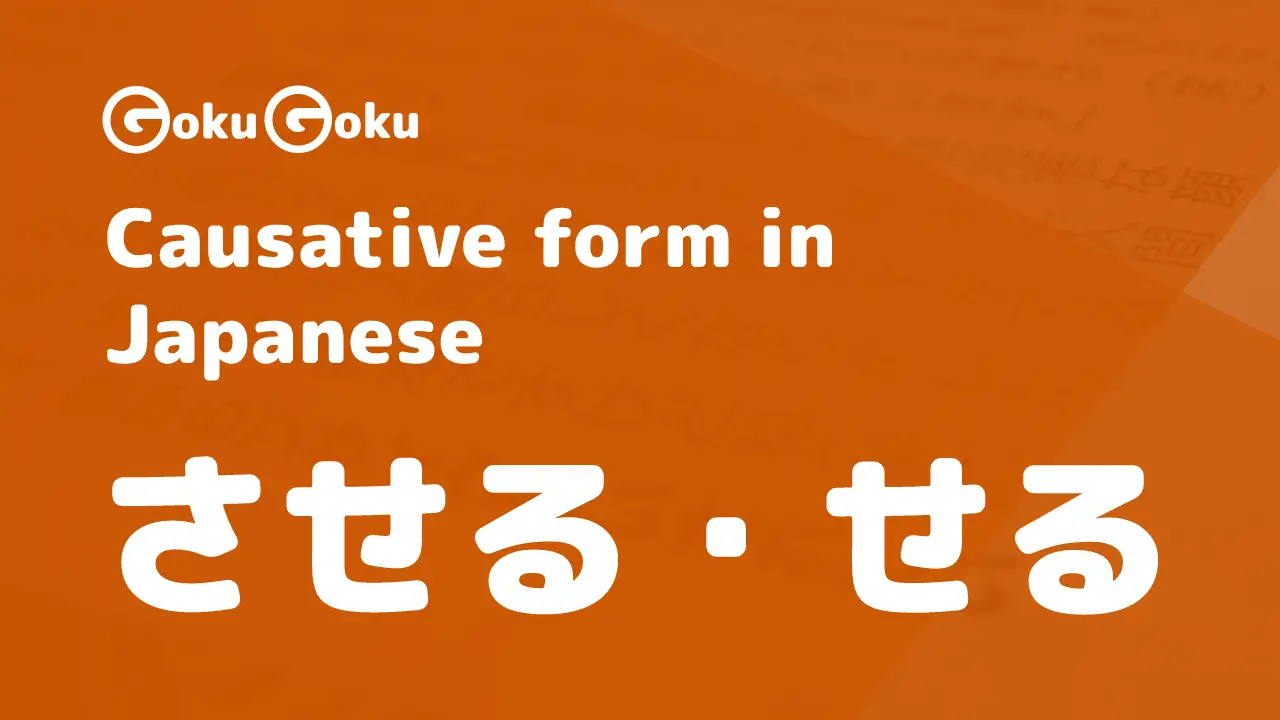The passive form in Japanese - られる and れる
Anna Baffa Volpe
Get in touch with meToday we are dealing with the passive form in Japanese, which is useful and indispensable for understanding texts and also in everyday conversation in Japan.
The conjugation of this form involves the use of the suffixes られる and れる depending on the type of verb: Ichidan verb or Godan.
受身形 ukemikei is the term used to define this verb form
The first kanji represents the verb 受ける which means receive, get, accept.
The passive form of the verb in Japanese
This form is used when the subject of the sentence, which can be a person or a thing, receives, undergoes the action.
The action in turn is performed by the agent expressed in the sentence.
How do you get the passive form?
Now let's see how to create the passive form for the various categories of verbs:
- Ichidan, with a single base, omit the final syllable る and add the suffix られる, and for the negative られない
- Godan, with five distinct bases, using the B1 or negative base ending in "a", combined with the suffix れる and for the negative れない
The passive form of する
dois されるThe passive form of 来る
comeis 来られる
Some examples of verbs
Ichidan verbs
食べる
eat; 食べられるbe eaten見る
see; 見られるbe seenGodan verbs
書く
write; 書かれるmake write読む
read; 読まれるmake read作る
prepare; 作られるbe prepared
Change of kana for verbs ending in う preceded by a vowel; form the negative base by adding わ (wa):
言う ⇨ 言わ passive 言われる
会う ⇨ 会わ passive 会われる
手伝う ⇨ 手伝 passive わ 手伝われる
Active form of the verb and construction of the sentence
In the active sentence we have a subject followed by the particles は/が, an object with the particle を and the verb in active form.
お母さんはラーメンを作った。
Mom made ramen.
先生は生徒を褒めた。
The teacher praised the pupil.
Passive form of the verb and sentence construction
In the passive sentence construction, we have a subject expressed by the は/が particles who receives or undergoes the action, an agent who performs the action followed by the に particles , によって or から and from the verb in its passive form.
Referencing the same examples cited in active form:
ラーメンはお母さんに作られた。
The ramen was made by mom.
生徒は先生に褒められた。
The pupil was commended by the teacher.
Passive form expressing harm or annoyance
A particular use of the passive form is in situations where the subject feels annoyance with respect to the expressed action.
迷惑の受身 meiwaku no ukemi, indicates passive of annoyance, of harm
私が前の客に欲しいものを買われた。
The customer in front of me bought what I wanted.
- Many languages do not have the passive form for intransitive verbs. Thus it is more natural to translate the sentence into its active form, transforming the agent into the subject of the sentence.
Passive form and intransitive verbs
Continuing with the emphasis on the nuisance or damage that the subject suffers, we have a particular use of the passive form with intransitive verbs.
- 雨が降る
rain
雨に降られて、困った。
I am in trouble because of the rain.
We have two forms:
雨が降った
it rainedobserve the objective fact雨に降られた
it rainedthat was bad, I didn't have an umbrella
妹に先に帰られた。
My sister left early.
- The subject expressed by the first person is often omitted in the sentence.
妹は先に帰った。
My sister left early.
The sentence expressed with the plain past form expresses an objective fact without nuances and interpretations. Instead the use of the passive form implies something more.
my sister left early without warning me -my sister left early and she didn't leave me the house keys
Keigo and passive form
The passive form is also widely used in honorific language, keigo.
タクシーに乗られて、帰られますか。
Take a taxi home?
The verbs on which the passive form is applied are:
タクシーに乗る
take a taxi⇨ 乗られる帰る
return(home),go away⇨ 帰られる
Forms expressing 尊敬 respect, reverence
先生が話される。
Teacher speaks.
Passive and potential form
The formation of the passive recalls exactly the potential form which expresses the ability to do something.
可能 potential, ability
Let's consider the passive form 食べられる, if I say:
何でも食べられる。
I eat anything.
I mean that:
I can eat anything
I have no problem with food preferences
It is thus a potential form.
"Spontaneity" expressed by the passive form
We have another particular use of the passive form in those expressions that in Japanese are defined as spontaneity and concern verbs that indicate emotions and feelings.
心配する
worry驚く
wonder思い出す
remember考える
think偲ぶ
remember with nostalgia
自発 spontaneity, naturalness
They are verbs in which there is no one's will, they are actions that occur spontaneously, naturally.
子どものころが思い出される。
My childhood comes to mind.
As you can see the passive form has various applications and it is worth dwelling on this aspect of the language.
Translations into various languages may differ slightly from the original Japanese text; I recall the element of the context in which the action takes place as it provides us with the elements to choose the best translation in our native language.







